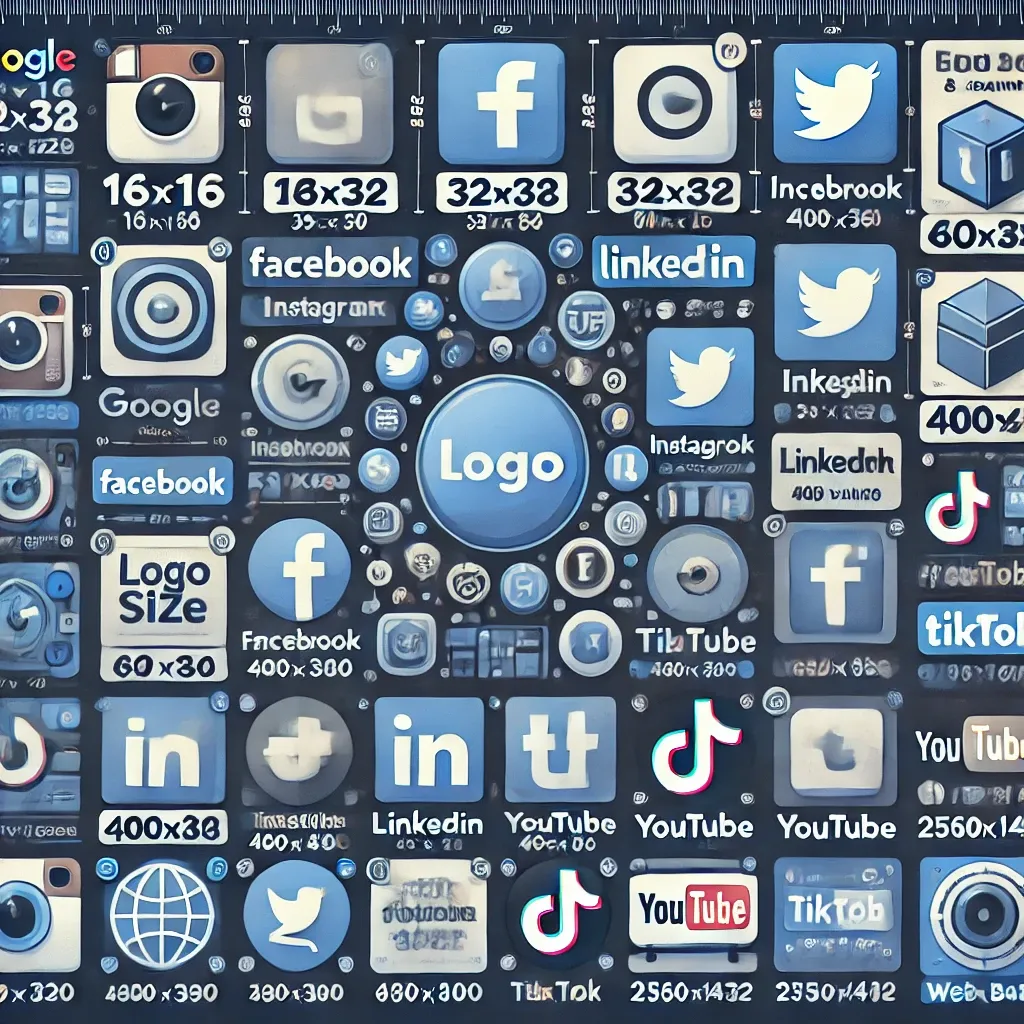Essential Logo and Banner Sizes for Websites and Social Media
Whether you’re building a brand, launching a website, or optimizing your social media presence, knowing the right logo and banner sizes is crucial. Using the correct dimensions ensures your visuals look sharp, professional, and fit perfectly across platforms.

Whether you’re building a brand, launching a website, or optimizing your social media presence, knowing the right logo and banner sizes is crucial. Using the correct dimensions ensures your visuals look sharp, professional, and fit perfectly across platforms.
This guide provides a complete breakdown of essential logo and banner sizes for websites, social media, and online services.
Quick Reference List: Most Common Sizes
- Favicon: 16x16, 32x32, 64x64 px
- Profile Pictures: 400x400 px (LinkedIn, Twitter), 170x170 px (Facebook)
- Cover Photos: 820x312 px (Facebook), 1500x500 px (Twitter), 2560x1440 px (YouTube)
- Website Header Banner: 1920x600 px
- Social Media Post Image: 1200x630 px (Facebook), 1080x1080 px (Instagram)
Favicons & Web App Logos
Favicons are the tiny icons seen in browser tabs and bookmarks. They are also used for progressive web apps and desktop shortcuts.
- 16x16 px – Standard browser favicon
- 32x32 px – High-resolution browser favicon
- 48x48 px – Windows desktop shortcut icon
- 64x64 px – Higher-resolution version for apps
- 128x128 px – Web apps, desktop icons
- 192x192 px – Android home screen icons (PWAs)
- 512x512 px – Required for Google Web App manifest (PWAs)
Google Services
Google platforms, including Google Workspace, require specific logo sizes:
- Google Admin Console Logo: 256x256 px
- Google Workspace Profile Photo: 250x250 px
- Google Business Profile Logo: 720x720 px (minimum)
Social Media Logos & Banners
- Profile Picture: 170x170 px (displays as 128x128 px on mobile)
- Cover Photo: 820x312 px (safe zone: 640x360 px for mobile)
- Event Cover: 1200x628 px
- Shared Image Post: 1200x630 px
- Facebook Ad Image: 1080x1080 px (1:1 aspect ratio)
- Profile Picture: 320x320 px
- Post Image: 1080x1080 px
- Story Image: 1080x1920 px
- Reel Thumbnail: 1080x1920 px
Twitter (X)
- Profile Picture: 400x400 px
- Header Image (Banner): 1500x500 px
- Shared Image Post: 1200x675 px
- Profile Picture (Personal): 400x400 px (recommended 800x800 px)
- Company Logo: 300x300 px
- Company Banner: 1128x191 px
- Shared Image Post: 1200x627 px
YouTube
- Profile Picture: 800x800 px
- Channel Banner: 2560x1440 px (safe area: 1546x423 px for mobile)
- Video Thumbnail: 1280x720 px
TikTok
- Profile Picture: 200x200 px
- Video Aspect Ratio: 1080x1920 px
Web Banners (General)
If you’re designing for a blog, e-commerce site, or business page, these are the most commonly used banner sizes:
- Website Header Banner: 1920x600 px (full-width header image)
- Hero Image: 1920x1080 px (for high-resolution displays)
- Blog Post Featured Image: 1200x628 px (optimized for sharing)
Recommended Logo Variations
To maintain a consistent brand presence, consider creating these logo variations:
- Primary Logo – Full detail, high resolution (SVG, PNG)
- Square Logo (1:1 aspect ratio) – Used for profile pictures
- Favicon Versions – 16x16, 32x32, 64x64 px
- Transparent Background Version – Works on all backgrounds
- Dark Background Version – For light-colored backgrounds
- Monochrome Version – Black & white for special use cases
- Icon-Only Version – Just the brand symbol
- Wordmark Version – Just the text portion of the logo
Final Thoughts
Using the right logo and banner sizes ensures your brand looks polished and professional across all digital platforms. Whether you're setting up a new business, optimizing a website, or managing a social media presence, keeping these dimensions in mind will help your visuals look crisp and properly formatted.
Need help resizing or optimizing your logos? Let us know!
Comments ()